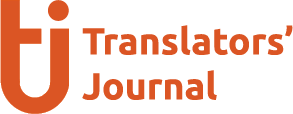Most people believe that showing up on LinkedIn is enough to land in-house positions.
The reality is, serious roles are often hidden behind company career pages, specialized job boards, and personal networks.
LinkedIn may mirror some of these listings, but it’s rarely where the hiring process truly happens.
This article shows why LinkedIn alone won’t get you serious in-house translator jobs, how to use it smartly, where most stable opportunities really appear, and practical ways to expand your search and connect with the right people.
Let’s get straight into it.
Why LinkedIn Isn’t Enough for In-House Translator Roles
Many translators assume LinkedIn is where all the serious opportunities live. The truth is most in-house translation roles are not primarily on LinkedIn.
Large Language Service Providers (LSPs), corporations, and NGOs tend to list openings on their own career pages or specialized industry job boards, not on social feeds. While LinkedIn occasionally mirrors those listings, it’s rarely where the hiring process truly happens.
The best roles are not necessarily discoverable through LinkedIn’s algorithm. Being seen on LinkedIn doesn’t mean you’re in the right hiring funnel. The platform excels at personal branding and discovery, not at final-stage recruitment.
- LinkedIn is built for visibility, not structured recruiting. Companies prefer managing applications through their ATS (Applicant Tracking Systems) for compliance and efficiency.
- LinkedIn job posts attract volume, not necessarily fit. Recruiters often receive hundreds of one-click submissions where only a few relevant applications among many generic ones.
- Company websites reach a more targeted audience. HR teams can track applications directly and filter based on certain criteria.
What LinkedIn Can Do Better Than Job Boards
LinkedIn is a social media for professional visibility. For translators, that means it works best as a space to build credibility, showcase expertise, and connect directly with the people behind hiring decisions.
Here’s what it does best:
- Personal branding: Establish authority in your language pair or niches.
- Direct access: Reach out to project managers, HR professionals, or localization leads through connection requests or short, thoughtful messages.
- Organic discovery: Recruiters often use LinkedIn’s search to find translators by language combination or industry expertise.
- Thought leadership: Regularly post insights, reflections, or short case studies from your translation work to demonstrate skill and professionalism.
- Community building: Network with peers, mentors, and industry figures outside of formal job channels.
Types of In-House Roles for Translators
Not all jobs for translators involve pure translation work. While translating remains the core skill, many in-house opportunities leverage a translator’s expertise in broader ways. Understanding this distinction helps you broaden your job search while staying aligned with your skills and career goals. These roles can be grouped into two main categories:
- Language roles
- Translation
- Editing and proofreading
- Terminology management, etc.
- General roles for translators
- Project coordination
- Localization management
- Quality assurance or language-related support functions
The Real Path To Serious In-House Jobs For Translators
To secure full-time, stable positions, your strategy must extend beyond LinkedIn.Want to reach the 90% of jobs that never make it to LinkedIn? Here’s where to look:
- Check company career pages directly. Major LSPs and multinational corporations regularly post positions on their own portals. These are often the most reliable and up-to-date listings
- Use specialized job boards. Curated resources like Weekly Job Window focus specifically on translation, localization, and language industry opportunities, saving time and filtering out low-quality leads.
- Build relationships with HR and project managers. Personalized, professional outreach can make you visible before a role is formally advertised. Short, respectful messages introducing your expertise go a long way.
- Attend translation and localization events. Conferences, webinars, and workshops—both in-person and virtual—are prime spaces for networking and learning about unadvertised openings.
- Use LinkedIn as a research tool, not a dependence tool. Track company expansions, new localization teams, or hiring patterns to prepare for openings, rather than relying solely on the platform to find jobs.
Smart LinkedIn Strategies For Translators
Even though serious in-house roles are found beyond LinkedIn, the platform remains valuable when used strategically. Here’s how you can make LinkedIn work for them:
- Optimize your profile. Your headline and “About” section should include recruiter-friendly keywords e.g. language pair and niche. These details improve visibility in recruiter searches and make your profile appear in front of the right people.
- Engage intelligently. Comment thoughtfully on posts that truly resonate with you.
- Network with purpose. Intentional networking builds trust and visibility, increasing your chances of being discovered for serious in-house roles. Add a short note when connecting. Connect with:
- Project Managers (PMs)
- HR recruiters from LSPs
- Fellow translators in your language pair
You don’t need LinkedIn alone to get your next in-house job. What you need is strategy, research, and relationship-building. If you want to land serious in-house roles, start by doing three things. These three simple changes can improve your chance to get hired immediately:
- Check company career pages regularly – the most reliable opportunities never make it to social feeds.
- Leverage specialized job boards – they filter out the noise and put you in front of the right people.
- Network intentionally – short, professional outreach to HR, project managers, and peers works far better than random connection requests.



